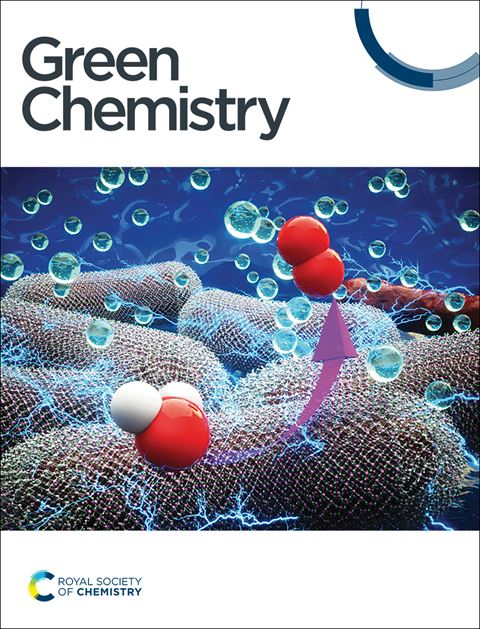Lignin organic–inorganic supramolecular aggregate derived N,O co-doped porous carbon nanosheets for high performance zinc-ion hybrid capacitors†
IF 9.3
1区 化学
Q1 CHEMISTRY, MULTIDISCIPLINARY
引用次数: 0
Abstract
Nitrogen and oxygen co-doped porous carbon holds considerable potential for enhancing zinc-ion hybrid capacitors (ZIHCs) in large-scale energy storage. However, designing high-performance carbonaceous cathodes with accessible active sites and efficient ion transport pathways remains challenging. Herein, we employed a multi-scale assembly strategy to construct lignin-based organic–inorganic supramolecular aggregates (LSA) to prepare nitrogen and oxygen co-doped porous carbon nanosheets (S-NLPC), achieving an exceptionally high specific surface area of 2848.1 m2 g−1, a hierarchical porous structure, and substantial levels of nitrogen and oxygen doping (N: 4.0 at% and O: 8.9 at%). The carbon nanosheets saturated with customized micro–mesopores significantly enhance the kinetics of ion transport and storage, while the nitrogen and oxygen doping improves the accessibility of high-density active sites and introduces additional chemisorption sites. As a result, the ZIHCs utilizing S-NLPC as the cathode demonstrate an enhanced specific capacitance of 433 F g−1 (192.4 mA h g−1), superior energy density of 154.3 W h kg−1 at 80.2 W kg−1, and remarkable cycling stability with a capacity retention of 90.2% after 20 000 cycles at 5 A g−1. Furthermore, ex situ characterization reveals that the superior zinc ion storage performance of S-NLPC is primarily attributed to the reversible chemisorption of oxygen functional groups and the co-adsorption mechanism of Zn2+ and H+. This work presents a novel strategy for constructing lignin-based inorganic–organic aggregates utilizing multi-scale forces, providing new insights into the structural design of carbon-based cathodes for high-performance ZIHCs.

求助全文
约1分钟内获得全文
求助全文
来源期刊

Green Chemistry
化学-化学综合
CiteScore
16.10
自引率
7.10%
发文量
677
审稿时长
1.4 months
期刊介绍:
Green Chemistry is a journal that provides a unique forum for the publication of innovative research on the development of alternative green and sustainable technologies. The scope of Green Chemistry is based on the definition proposed by Anastas and Warner (Green Chemistry: Theory and Practice, P T Anastas and J C Warner, Oxford University Press, Oxford, 1998), which defines green chemistry as the utilisation of a set of principles that reduces or eliminates the use or generation of hazardous substances in the design, manufacture and application of chemical products. Green Chemistry aims to reduce the environmental impact of the chemical enterprise by developing a technology base that is inherently non-toxic to living things and the environment. The journal welcomes submissions on all aspects of research relating to this endeavor and publishes original and significant cutting-edge research that is likely to be of wide general appeal. For a work to be published, it must present a significant advance in green chemistry, including a comparison with existing methods and a demonstration of advantages over those methods.
 求助内容:
求助内容: 应助结果提醒方式:
应助结果提醒方式:


